The Army Returned Two Iron Dome Air Defense Batteries to Israel

As Israel continues its war with Hamas, on October 19, the Biden administration announced that it was handing back two Iron Dome air-defense batteries as part of a larger flow of military aid to the region. The United States purchased the Iron Domes a few years earlier for $373 million, and they were the only two in Army service. Earlier, on October 12, the U.S. began transferring Tamirs (still situated in Israel) to Israeli ownership in order to help sustain Israeli Iron Dome batteries.
Hamas unleashed 2,000 rockets on October 7 alone, the day it launched its attack on settlements and outposts along the Gaza border that killed 1,400 people. Over the next two weeks, the militant group fired 5,000 additional unguided rockets at Israeli cities (with several hundred more fired by Lebanon-based Hezbollah) even as it came under heavy bombardment by Israeli warplanes and artillery that has reportedly killed up to 8,000 Gazans.
As in the past, a combination of the crudeness of the rockets and interceptions executed by Israel’s battle-tested Iron Dome air defense system kept casualties on the Israeli side relatively low, with 11 people killed by October 24, according to the AP.
As the transparent volume of rockets could still overwhelm Israeli defenses, the two additional batteries and the inventory of Tamir missiles will undoubtedly be welcomed by the Israel Defense Forces (IDF). They will supplement the approximately 10 batteries already dispersed across Israel and the two deployed at sea on Sa’ar-class corvettes.
Technically, the transfer is via a lease, meaning that the U.S. will retain ownership and could ask for the batteries back. But there may not be much urgency to do so, as the U.S. Army was essentially forced by Congress to buy those Iron Dome systems four years ago, and the service likely doesn’t mind having an excuse to let go of them.
In the longer term, production of the system’s Tamir interceptor missiles in the United States will also increase. On October 26, Raytheon and Rafael announced their intent to open a $33 million production line in East Camden, Arkansas that will begin producing ‘all-up-rounds’ for use by Israel and the Marine Corps by 2025. Currently, 70 percent of each missile (all but six components) is assembled in the United States.
Why the U.S. Army turned its nose up at the Iron Dome
Iron Dome was jointly designed by Israel and the U.S. to serve as a reliable and cost-efficient means of shooting down the many kinds of unguided rockets favored by Hamas and Hezbollah militants for attacks directed at Israeli population centers.
At $40,000 per shot, the system’s Tamir missiles are much cheaper than most air defense missiles, but an order of magnitude more expensive than the projectiles they are routinely called upon to destroy.
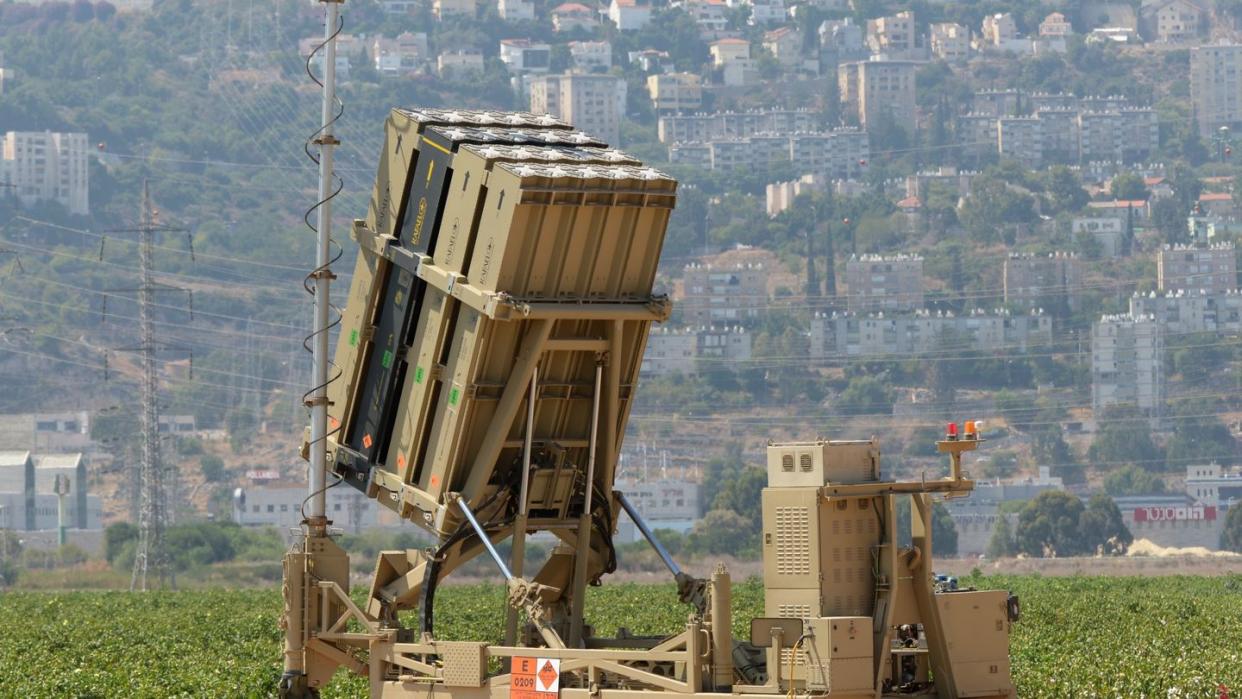
The spectacle of Iron Dome swatting down rocket upon rocket created a degree of global brand recognition. And thus, when Congress found that the U.S. Army was suffering an air defense gap versus cruise missiles in 2019, it mandated that the service purchase two Iron Dome batteries to fulfill an ‘Indirect Fires Protection Capability’, increment 2.
The requirement specifically called for the deployment of mobile launchers compatible with U.S. cargo jets that could defend 6 to 12 square miles of surrounding terrain.
The Army had resisted purchasing Iron Dome because it wasn’t designed at the outset to defeat cruise missiles. Unlike unguided rockets arcing in a ballistic trajectory, far more costly guided cruise missiles often fly very low and maneuvering on their way to the target to complicate interception.
Such weapons—especially if launched by China, Iran, or Russia—were of greater concern to Army strategists than unguided artillery rockets already periodically used to harass U.S. bases in Iraq and Syria. That said, Iron Dome has downed some airplanes, cruise missiles, and drones over the years, and has always had a degree of capability against these threats.
The Army ultimately got its Iron Dome systems and set about evaluating them. Despite downing eight cruise missiles in a 2021 test, the final verdict was negative, leading to the cancelation of the procurement of a third and fourth battery. Army acquisition chief Bruce Jette testified to the Senate that Iron Dome only has the “ability to deal with some cruise missiles. The problem is we have to deal with all cruise missiles, and we don’t think we’ve gotten there yet.”
Other major reported issues included that the Army was unable to integrate Iron Dome into its IBCS air defense network, that there were concerns over cybersecurity, and that manufacturer Rafael refused to give source-code-level access needed to address these issues.
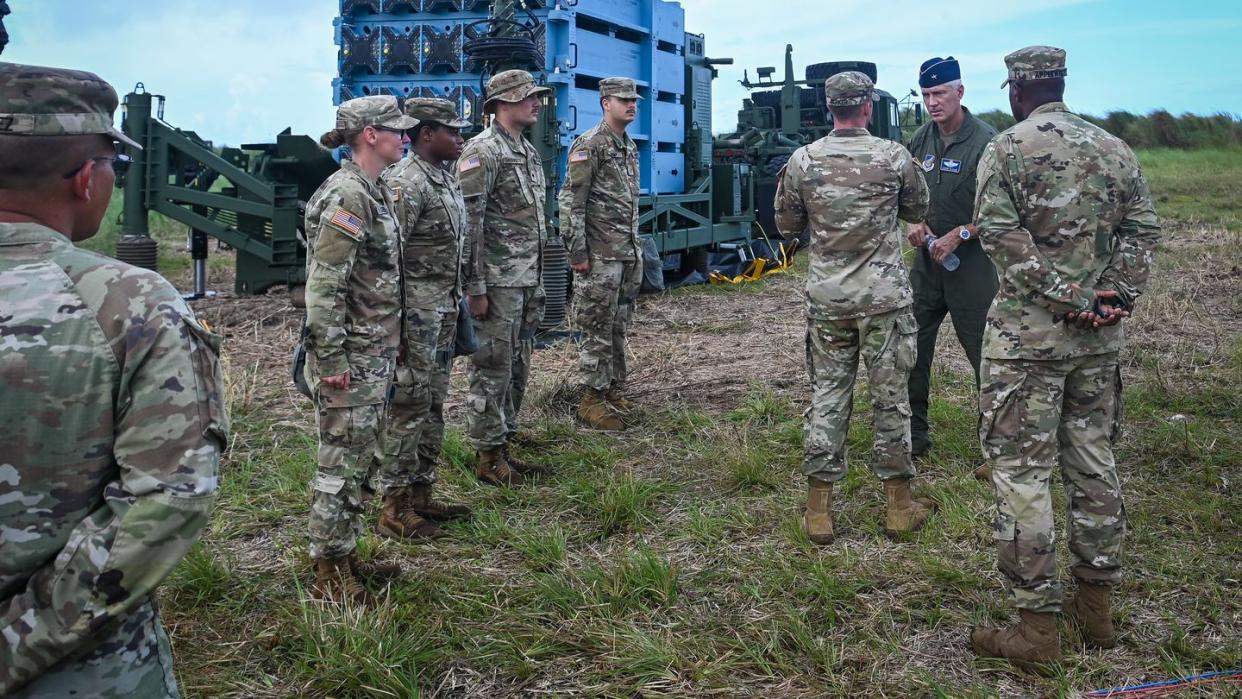
One of the Army’s Iron Dome batteries was packed off to Guam in 2021 for a week-long exercise. But otherwise, the batteries have resided at Joint Base Lewis-McChord in Washington state, waiting for the Army to decide on a way to use them.
Enduring Shield: the Army's Iron Dome Rival
It’s unclear if the U.S. will request the return of the two Iron Dome batteries at some point after the perceived end of the current crisis. But the Army—having settled on its preferred Sidewinder-based short-range air defense solution—may not mind if they don’t come back.
Presently, the service is on track to adopt Dynetics’s Enduring Shield launcher, armed with established AIM-9X Sidewinder missile (originally an air-to-air weapon for jet fighters) for Increment 2 of the short-range 360-degree air defense requirement. That depends, however, on whether or not it is deemed satisfactory in ongoing evaluations.
If the 16 pre-production prototypes (built for $237 million) satisfactorily complete testing by the end of 2023, up to 400 launchers may be procured. The Army is already requesting proposals for a second type of missile compatible with this launcher to better tackle supersonic cruise missiles and larger artillery rockets.
The AIM-9X is an infrared-guided missile, but has a datalink allowing it to receive initial guidance from the firing vehicle by other means. There have reportedly been modifications to ground-launched AIM-9X rounds aimed at managing the heat generated by a weapon ordinarily fired by aircraft thousands of feet above the ground—a problem which contributed to killing the procurement of a predecessor known as the Multi-Mission Launcher.
Each AIM-9X costs roughly $400,000 or more—ten times the cost of a Tamir interceptor. But presumably, the Army believes that it has an improved performance regime to more plausibly intercept very fast or maneuverable cruise missiles, and it apparently interfaces well with its IBCS network.
It’s worth noting that this isn’t the first time the Army has slapped Sidewinders on vehicles for mobile short-range air defense. Between 1969 and 1997, it operated the tracked M730 Chapparal vehicle, which was based on AIM-9D Sidewinder and was armed with four MIM-72 missiles. Of course, the insides of modern AIM-9Xs—including thrust-vector control rocket engines and infrared-imaging seekers—have almost nothing in common with the decades-older variants.
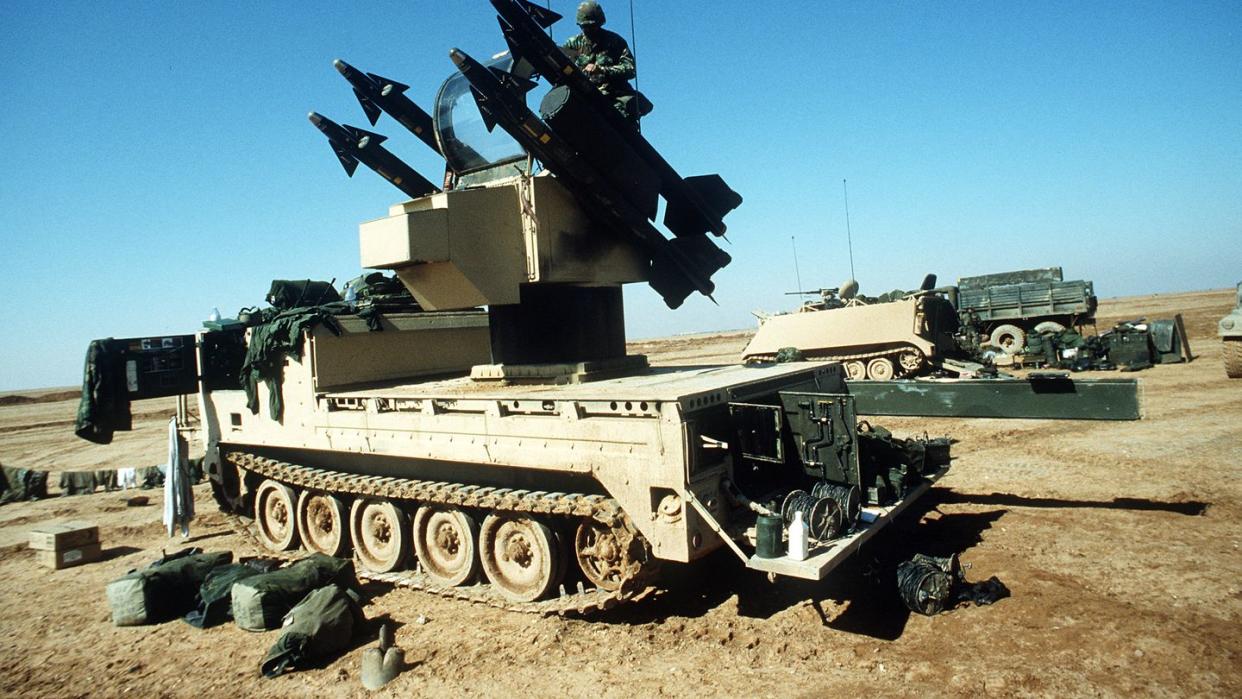
The Marine Corps and Iron Dome
Ironically, in August, the U.S. Marine Corps began advancing its own plans to procure three truck-towed Iron Dome batteries and 1,920 Tamir missiles for its ‘Medium-Range Intercept Capability’ (MRIC) requirement. Iron Dome was deemed satisfactory following tests in July and October 2022, in which it downed simultaneously fired simulated cruise missile targets.
The Tamir missile will be known as SkyHunter in U.S. services, and the batteries apparently already interface well with the Marine’s AN/TPS-80 GATOR radar and “Cactus” airspace management system—in notable contrast to the Army’s experience with IBCS. Marine Low-Altitude Air Defense battalions will receive one battery each to supplement their much shorter range heat-seeking Stinger missiles. This will restore a medium-range air defense capability that has been missing since the 2002 retirement of Marine HAWK missile units.
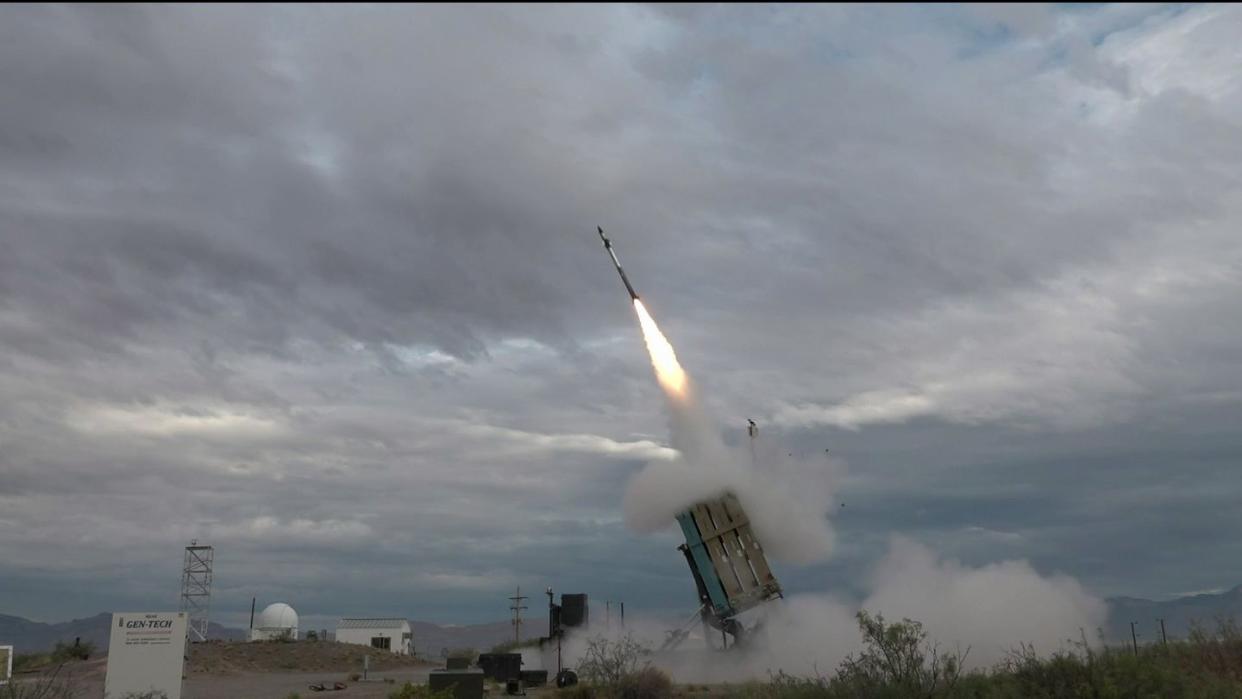
Curiously, the Marines will receive 44 SkyHunter launchers (each carrying 20 missiles) and 11 command centers for their three batteries, meaning that they will have more launchers per battery than expected. Besides involving exclusively U.S.-built components and being on mobile launch trailers towed by 5-ton MTVR trucks, it’s unclear how much SkyHunter missiles and related platforms will differ from the Israeli originals.
The Marine Corps believes SkyHunter to be effective against cruise missiles, rockets, mortar shells, drones, and manned aircraft (in a 360 degree radius, and out to a maximum possible range of 43 miles). There’s also been speculation that Iron Dome launchers could optionally be deployed on the decks of Navy amphibious carriers with embarked Marines, thereby complementing the ships’ short-range SeaRAM air defense systems (max 6 miles) with a much extended medium-range layer.
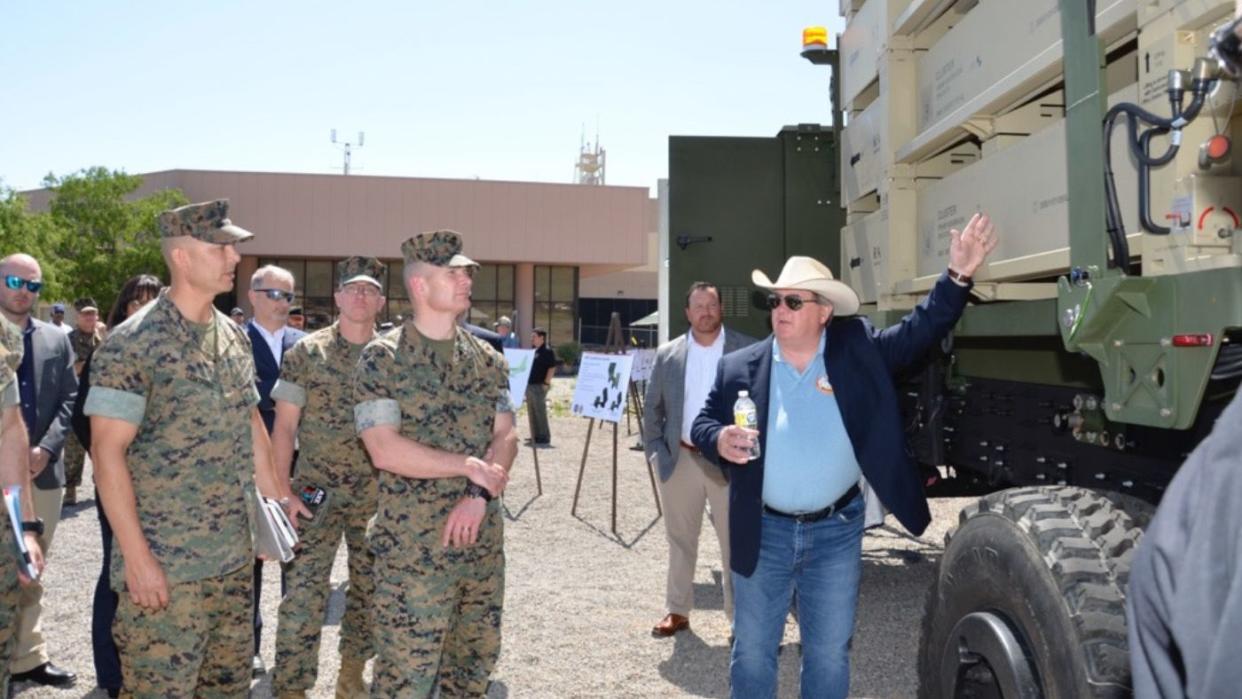
Why is the Marine Corps opting for the platform at which the Army is turning up its nose? On one level, perhaps the Army is more preoccupied with defending against the highest-end threats from China and Russia, while the Marine Corps might focus on more “everyday” threats.
The Corps is also less well-funded, and is used to receiving ‘hand-me-down’ systems. Thus, modest modifications to the already-developed Iron Dome and its much cheaper missiles may represent the best bang-for-buck option for the expeditionary service.
It’s curious that the Marine Corps isn’t interested in snapping up the Army’s unwanted Iron Domes, but perhaps the configuration required by the Marines can’t be practically retrofitted from the standard-pattern batteries received by the Army.
You Might Also Like
